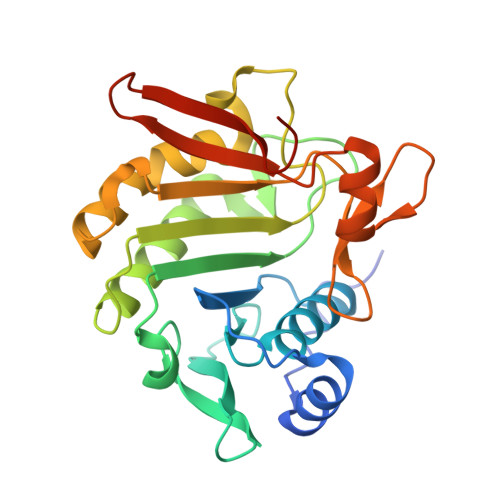Structure-Activity Relationship of Inositol Thiophosphate Analogs as Allosteric Activators of Clostridioides difficile Toxin B.
Cummer, R., Grosjean, F., Bolteau, R., Vasegh, S.E., Veyron, S., Keogh, L., Trempe, J.F., Castagner, B.(2024) J Med Chem 67: 16576-16597
- PubMed: 39254660
- DOI: https://doi.org/10.1021/acs.jmedchem.4c01408
- Primary Citation of Related Structures:
9BJA - PubMed Abstract:
Clostridioides difficile is a bacterium that causes life-threatening intestinal infections. Infection symptoms are mediated by a toxin secreted by the bacterium. Toxin pathogenesis is modulated by the intracellular molecule, inositol-hexakisphosphate (IP6). IP6 binds to a cysteine protease domain (CPD) on the toxin, inducing autoproteolysis, which liberates a virulence factor in the cell cytosol. We developed second-generation IP6 analogs designed to induce autoproteolysis in the gut lumen, prior to toxin uptake, circumventing pathogenesis. We synthesized a panel of thiophosphate-/sulfate-containing IP6 analogs and characterized their toxin binding affinity, autoproteolysis induction, and cation interactions. Our top candidate was soluble in extracellular cation concentrations, unlike IP6. The IP6 analogs were more negatively charged than IP6, which improved affinity and stabilization of the CPD, enhancing toxin autoproteolysis. Our data illustrate the optimization of IP6 with thiophosphate biomimetic which are more capable of inducing toxin autoproteolysis than the native ligand, warranting further studies in vivo.
- Department of Pharmacology and Therapeutics, McGill University, Québec H3G 1Y6, Canada.
Organizational Affiliation:

















